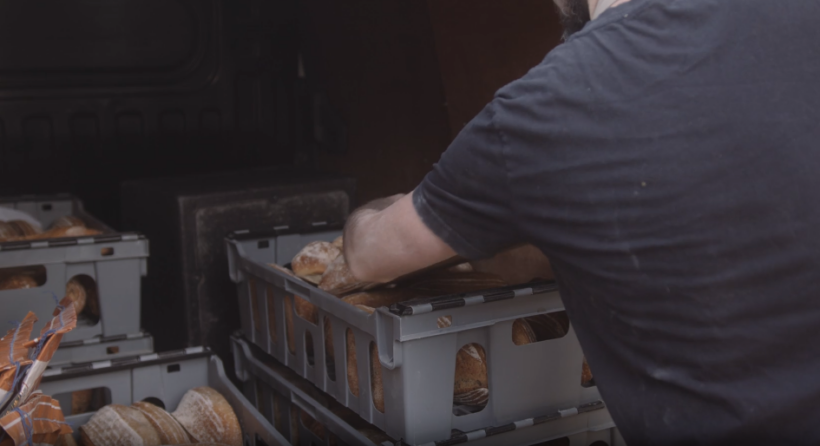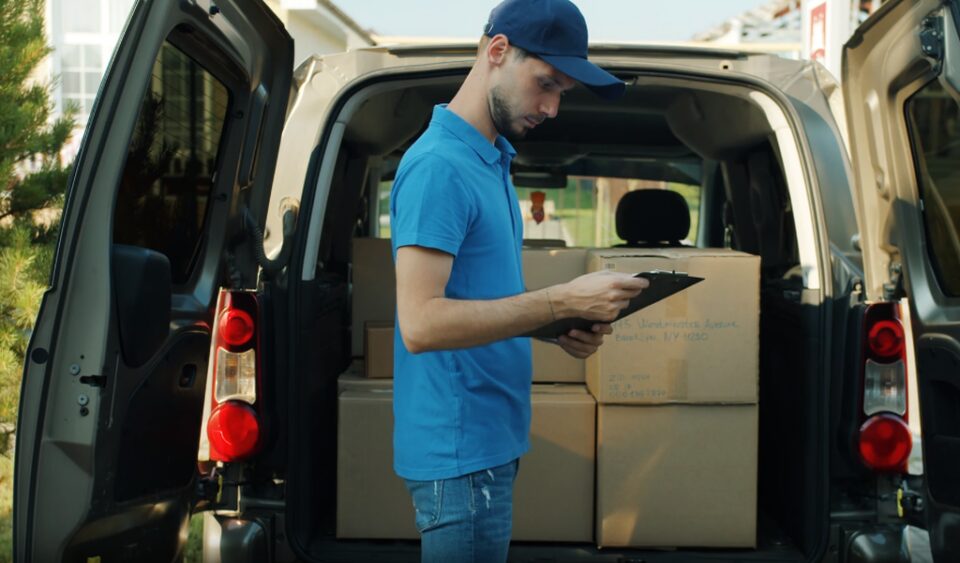Whether you’re in construction, delivery or simply moving homes, securely loading your van is of the utmost importance. Ensuring that your van is loaded securely not only safeguards your cargo but also protects you, other road users and pedestrians. Aside from the immediate dangers of poorly secured cargo, there are other consequential concerns such as legal penalties, increased operational costs and potential damage to your reputation or business. We’ve put together a comprehensive guide to ensure your van is loaded both securely and safely, preparing you for any journey ahead.
The DVSA’s Role in Maintaining Road Safety and Load Security

The Driver and Vehicle Standards Agency (DVSA) plays a key role in ensuring that vehicles and their loads comply with specific safety standards. They operate under a few key legislations, which include:
- Regulation 100 of The Road Vehicles (Construction and Use) Regulations 1986.
- Section 40a of The Road Traffic Act 1988.
When DVSA examiners are evaluating the safety and security of a vehicle’s load, they pay close attention to the following factors:
- Whether any part of the load might shift, fall or bounce unpredictably.
- If the weight and position of the load compromise the vehicle’s stability or manoeuvrability.
- The possibility of the load coming loose during the journey.
- The condition of the equipment used to secure the load, and if it’s suited for the cargo.
- Whether the load, or the way it’s fastened, poses any immediate risk to other road users.
By following the DVSA’s criteria, drivers and business fleets can meet road safety standards, ensuring not just the safety of their cargo, but also of everyone on the road.
Understanding Weight Restrictions and Distribution

Every van has a specified maximum weight limit, known as the Gross Vehicle Weight (GVW). This amount can be found on your vehicle identification number (VIN) plate. Adhering to this limit isn’t just a best practice – it’s the law. According to fleet insurance specialists www.bluedropservices.co.uk – beyond the legal implications, overloading or uneven loading can adversely affect your van’s braking capacity and fuel efficiency. An unevenly balanced load can also drastically affect its stability, making the van more prone to tipping or swaying, especially during turns. To counteract this, always make sure that heavy items are placed at the lowest point and centred between the wheels.
How to Safely Secure Your Cargo
Rethink Traditional Methods
While ropes and bungee cords might be handy for tying down lighter items, they aren’t the most reliable for securing heavier items. It’s important to regularly check them for wear and tear. Given that their weight-bearing capacity is often not rated, their reliability for heavier cargo can be unpredictable.
Invest in Ratchet Straps
Ratchet straps are a game-changer in cargo security. With a typical breaking strength of up to 10,000 pounds and being available in various lengths, they ensure that larger items stay stable during transportation. Their design lets you make precise tension adjustments so your cargo stays securely anchored. When using them, it’s crucial to review their weight rating; always opt for straps that can support at least half of your total cargo weight.
Anti-Slip Measures
Cargo shouldn’t shift during transit. Tools such as tie-downs, cargo bars and cargo nets are invaluable in this regard. For lighter items, consider weighted bags, but always make sure these bags are well-anchored to prevent them from becoming hazards.
Double up On Securing Tools
Even if you believe one tie-down is sufficient, we suggest always using a minimum of two. This double protection ensures that, even if one fails, there’s a backup in place.
Assess Your Anchor Points
Many vans come equipped with anchor points. If yours doesn’t, you might want to install some. Always check their weight ratings to ensure they align with the cargo’s weight.
Use Nets and Tarps for Lightweight Cargo
For items that might be easily swayed by wind, cargo nets or tarps are ideal. They protect lightweight items from exiting the vehicle and becoming road hazards. Also, be cautious that the tools you use don’t become dangers themselves – loose straps or tarps can be just as hazardous as unsecured cargo.
Be Cautious with Elevated Loads
If your cargo extends beyond the cab’s height, it’s essential to add extra security measures. This extended height can alter the vehicle’s aerodynamics, potentially making it more challenging to control at higher speeds or in windy conditions. It’s not just about the cargo’s security but also about guaranteeing the vehicle remains stable and safe to drive.
Consider Cargo Bars for Bulkier Items
Cargo bars can be real lifesavers by preventing heavy items from moving around. But, for that extra peace of mind, it’s a good idea to team them up with straps. Pairing them with straps gives that extra layer of security, since they may not be reliable during severe events like rollovers.
Making sure your van’s cargo is secure isn’t just about ticking a regulatory box. It’s about ensuring the safety of everyone around you. A well-secured cargo reduces risks, costs and potential delays. Every time you hit the road, remember to prepare for the unexpected and always prioritise safety.


